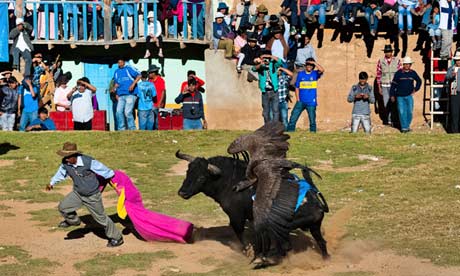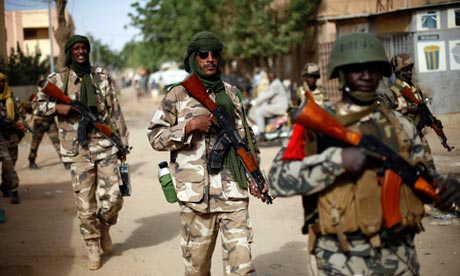Lance Armstrong has been stripped of his Tour de France titles for using performance-enhancing drugs – so should standups lose their comedyawards if they use writers? One of our readers, PoorButNotAChav,supplies this week's most intriguing story, culled from a conversation between Absolute Radio host Frank Skinner and his co-presenters last weekend.
Discussing the disgraced cyclist, Skinnersaid: "I've done panel shows where there have been other [comics] on as guests, and I've found out after that they've had four or five writers. That's not a level playing field, is it? They're using performance-enhancing writers. At home, people are thinking they're funnier than that Frank Skinner. In fact, it's five or six to one. I wonder if Oprah knows about this."
Skinner's comments – made, of course, in jest – add to mounting discontent within comedy at the glibness and hyper-competitiveness of TV panel shows. "Effectively, these comics are miming to someone else's jokes," Skinner concluded. "Comedians should start returning their awards if they've been on shows that use writers."
There is one panel show, however, that is above most criticism – and it's in the news this week, as Tim Brooke-Taylor tells a Bristol audience whyI'm Sorry I Haven't a Clue never transferred to TV. As Chortle reports, the Radio 4 show's regular panellist told a Q&A session at the city's Slapstick festival: "We did a pilot for ITV, and they said: 'Yes, we'd like to go along with it. But can we have some younger people doing it?' I think they missed the point somewhat." The show this year celebrates its 40th birthday on radio.
From one well-loved comedy veteran to another – but this week, Billy Connolly is the target of fury, as animal rights activists attack the Big Yin for accepting a gift of, er, stingray-skin shoes from a film crew while he was working on The Hobbit. A spokesman for People for the Ethical Treatment of Animals said: "Stingrays are fascinating, gentle sea animals, and they don't deserve to be slaughtered for a pair of joke shoes that will likely never even be worn."
Rolling Stone magazine has named "the 50 funniest people now", and neither Brooke-Taylor nor Connolly make the cut. Brits are few and far between, in fact, and seemingly selected on the basis of US profile alone: Daniel Kitson at 46, John Oliver at 26 and Ricky Gervais at 16 are among the lucky few. Tina Fey, satirist Stephen Colbert and, at the top, the much-hyped Louis CK occupy the medal positions. Back in Blighty, the funniest people of tomorrow were assessed at last weekend's prestigious New Act of the Year award. The winner was Paul F Taylor, sidekick to Edinburgh Comedy award nominee Nick Helm in the double-act Helm and Taylor, and purveyor of "a mix of offbeat banter, studentish charm and tinges of Harry Hill," according to critic Bruce Dessau, reporting on Sunday evening's event.
A TV future probably beckons, perhaps in sitcoms like The Wrong Mans, in which Dawn French – it's just been announced – is to play James Corden's mum. Meanwhile, Sky1's hit comedy Spy is to be remade in the States, the sketch troupe Jigsaw (Nat Luurtsema, Dan Antopolski and Tom Craine) have been picked up by Radio 4 and the sitcom Fresh Meat is to be made into a movie.
Best of the Guardian's comedy coverage
• "You get about three minutes for free, by being well-known. Then you have to deliver" – Harry Hill on returning to standup after seven years away.
• "I did laugh out loud at Louie, but not as often as I'd hoped" – The Observer's Phil Hogan on Louis CK's sitcom.
• "Sayle redux brings back a quality of political disgust that comedy has been sorely lacking" – my review of the great Alexei's return to standup.
• "With the loud shirts, wild hair, dumb grins, dead voice, staring eyes – and with his bad jokes – he is less a standup than a parody of one" – Leo Benedictus covers wordplay king Milton Jones in this week's Comedy Gold slot.
• Chris Addison, Rebecca Front and others sign up to a new series of comedies on Sky Living, as reported by John Plunkett.
Controversy of the week
Regular Guardian readers will be up to speed with this one already: theBBC's decision to censor Fawlty Towers has been the talking point of the week. The episode in question, predictably enough, was The Germans – but it wasn't Basil's goosestepping that was deemed likely to cause offence. For the episode's broadcast on Sunday 20 January, the Beeb edited out a speech by Fawlty's regular guest the Major, which referred to "niggers" and "wogs". The cut was made, said a BBC spokesperson, to reflect changing public attitudes, and "to allow the episode to transmit to a family audience at 7.30pm on BBC2".
Never shy when a chance arises to bash the Beeb, the Daily Mail went big on the story, quoting correspondents to the BBC's Points of View messageboard who criticised the move. "I doubt if anyone but the terminally thin-skinned could be offended by the Major," wrote one. Another complained: "How sad BBC [that] you have finally succumbed and lost the guts to transmit the episode … It's about time you grew up BBC and trusted your audience." The Guardian's Mark Lawson joined the debate, while our readers offered their opinions – mostly against the cuts – below the line.
Best of our readers' comments
News that BBC1 sitcom Mrs Brown's Boys – loved by its vast audience, hated by the cultural cognoscenti – is to return for a fourth seriesinspired heated debate below the line. Brixtonian52 tried to put things into perspective:
If Mrs Brown's Boys was a Swedish import called Mrs Larsson's Boys and was shown on BBC4 with subtitles on a Saturday evening at 8.30 before The Killing or Borgen etc, then I am fairly confident most of the 'anti' people on here would all be falling over themselves saying how wonderful it was.
The came a comment from Mrs Brown's native Ireland, from a correspondent called festinog, which took some pleasure in most of our readers' dislike of the show:
Sorry my British cousins, but you owe us for 1,000 years of oppression and a famine. I feel that dumping this horrible little man on you has gone some way towards evening the score. Take Enda Kenny off our hands and we'll call it quits.
Alexei Sayle's article in advance of his long-awaited return to standup was followed by a gleeful wallow in his finest jokes from yesteryear. Treat yourself to a nostalgic chuckle, thirtysomethings, by reading the whole thread, which includes this corker, contributed by DmIsTheSaddestKey:
I got me girlfriend into a bit trouble recently. Yeah. I got her involved in the civil war in Angola.
Another comment, from Scriberpunk, inspires amusement and philosophical reflection in equal measure:
I always wanted more money than sense. I've got a fiver. I'm half way there.







